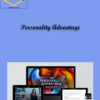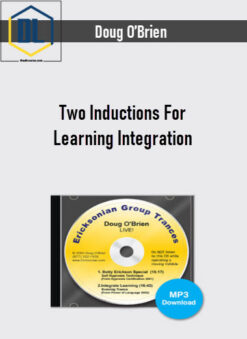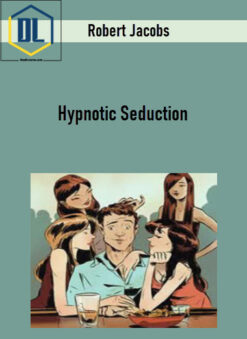Stanislav Grof – The Way of the Psychonaut
$250.00 Original price was: $250.00.$65.00Current price is: $65.00.
Product Delivery : Instant Deliver
Description
Stanislav Grof – The Way of the Psychonaut
Salepage: Stanislav Grof – The Way of the Psychonaut
Description of The Way of the Psychonaut
Venture beyond your ordinary mind and uncover your extraordinary capacity to explore — and gain wisdom from — other dimensions.
Access the power of non-ordinary states, shamanic practices and embodied healing work to transform your life.
Opening a New Portal
In The Way of the Psychonaut, you’ll discover why we are not limited by time, space and causality in the way we once thought.
Further, when you integrate methods of accessing non-ordinary states of consciousness, as shamans have done for thousands of years, you open to far more powerful, experiential and accelerated methods of healing and growth.
By journeying into your depths, you can release old traumas, free up your emotions, access expanded wisdom, and set a new, unitive baseline for your life.
In short, The Way of the Psychonaut is being forged by those who are willing to pioneer new methods for healing that transcend the limits of cognitive insights and allow us to access our full potential as human beings.
The Best of a New Paradigm
When you join Stan for The Way of the Psychonaut 6-month program, you’ll have a unique opportunity to explore this exciting new paradigm and its implications with one of the field’s most eminent elders — not only for your own personal growth but also for any transformational work you may do with others.
You’ll receive advanced teachings about how to access the power of non-ordinary states that allow you to develop a deeper understanding of shamanic practices,which help you move beyond talk therapy into life-changing experiences.
Over the course of six months, you’ll learn how to work with your “inner healer” as a compass to guide you to the precise next steps you need in your journey of growth.
You’ll expand your view of your psyche and our cosmos and understand the nature and role of transpersonal experiences,which can help you avoid pathologizing truly liberating experiences. You’ll also see how these experiences overlap with fields such as archetypal psychology.
And you’ll see how conscious breath practices offer some of the most potent pathways to personal freedom.
What’s more, you’ll gain powerful insights into the importance of your birth experience in setting the foundation for your growth and development — and why clearing birth trauma can be so powerful for your healing.
If you’re a clinician, you’ll gain a deeper understanding of suicide, depression, spiritual crises (“spiritual emergencies”) and the power of death and rebirth experiences.
Simply put, you’ll be amazed at Stan’s profound knowledge and how his bold new vision transcends entrenched, more limited views of psychology and spirit. This invigorating program will give you a far deeper understanding of the cosmos and our role in it.
What you’ll learn in The Way of the Psychonaut

- Open to a truly multidimensional understanding of yourself and others
- Have a grounded sense for how to harness the power of non-ordinary states
- Expand your sense of identity and connection to the cosmos
- Explore how to harness the power of non-ordinary states to move you beyond talk therapy into life-changing experiences
- Receive a detailed, expanded map of psyche and cosmos, including the nature and role of transpersonal experiences
- Integrate these advanced experiences in consciousness to build a more solid foundation for your growth and development
- Come away with key principles for safely navigating these new realms
- Understand the signs for spiritual crisis and how to navigate through it
- Explore the nature of the cosmos, including the nature of good and evil
- Receive a powerful map for COEX (Systems of Condensed Experience) experiences that include multiple levels of trauma in need of clearing
- Come to trust your “inner healer” to guide you to the experiences you need most
- Understand how to go deeper into the emotional and energetic roots of trauma to find true freedom
- Open to feeling truly at home in the universe
- Develop a more sophisticated understanding of psychopathology
- Integrate a deep sense of spirituality into your vision and practice of psychology
- Merge the best of science and spirituality into a higher-order synthesis
What You’ll Discover in These 6 Months
In this 6-month transformational intensive, Stan will explore the leading edge of modern consciousness research into the understanding of consciousness, of the human psyche, and the nature of reality. You’ll discover a vastly extended new cartography of the psyche. Special attention will be paid to experiences and observations that represent a serious challenge to the reductionist, materialistic paradigm of Western science and foreshadow an urgent need for a radical new worldview.
Each contemplation and training session will build harmoniously upon the next so you’ll develop a complete holistic understanding of the practices, tools and principles you’ll need to relate to a multitude of psychological experiences through an evolutionary lens.
Module 1: History of Psychonautics
Ancient, Aboriginal & Modern “Technologies of the Sacred”
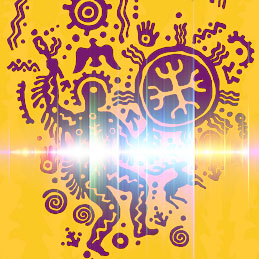
The industrial civilization and Western psychiatry have dismissed and pathologized non-ordinary states of consciousness and glorified rationality. Modern consciousness research has revealed that there exists a large and important subgroup of these states that have great healing, transformative, heuristic, and even evolutionary potential.
These states have played an important role in spiritual and ritual history of humanity (shamanism, rites of passage, ancient mysteries of death and rebirth, and mystical traditions of all great religions). Because of their capacity to induce experiences of mystical unity, they can be called “holotropic” (literally “moving toward wholeness”). Andrew Weil wrote in his book,The Natural Mind, that the craving for transcendence is the most powerful drive in the human psyche, stronger than sex.
Ancient and native cultures have held holotropic states in great respect and spent much time trying to develop what can be called “technologies of the sacred” — effective and safe methods to induce them. They combined in various ways fasting, sleep deprivation, instrumental music, chanting, dancing, solitude in nature, and extreme physical pain. Holotropic states can also be evoked by spiritual practices of the great religions of the world (different forms of yoga, various schools of Buddhism, Taoism, Sufism, Hesychasm, and Kabbalah).
The most powerful ways of expanding consciousness have been psychedelic plants (peyote, Psilocybin mushrooms, Salvia divinorum, hemp and others). Western science contributed to this list various methods of depth psychotherapy, work with pure alkaloids from visionary plants (mescaline, psilocybin, psilocin, DMT, 5-methoxy-DMT, harmaline, and others), synthetic entheogens, sensory deprivation and biofeedback.
In this session, you’ll:
- Investigate holotropic states, a large and important subgroup of non-ordinary states of consciousness that have extraordinary healing, transformative, heuristic and evolutionary potential
- Explore the history of psychonautics — the development of methods for inducing holotropic states and using them for ritual and spiritual purposes, healing and self-exploration
- Examine why during the Scientific Revolution and Industrial Revolution, materialistic science dismissed and rejected as irrational all approaches that were not rational
Module 2: Cartography of the Psyche in Depth Psychology
An Indispensable Tool for Psychonauts
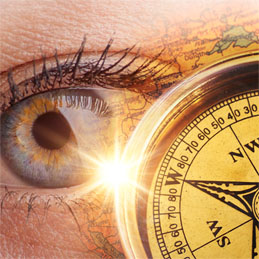
Sigmund Freud’s groundbreaking explorations and his discovery of the existence of the unconscious reawakened interest in the mystery of the human psyche. In his early work, Freud was using holotropic states (autohypnotic trance and hypnosis) to make the unconscious material conscious. Later he replaced this therapeutic strategy with the method of free association and analysis of transference. Using this approach he created the first map of the psyche limited to postnatal biography and the individual unconscious.
He also made other discoveries that are valuable for psychonauts: the technique of dream interpretation, the psychological mechanisms involved in the genesis of psychoneuroses and psychosomatic disorders, infantile sexuality, the phenomena of transference and countertransference, and others.
Freud attracted a group of brilliant and creative individuals who formed the “Viennese circle”; some of them applied the basic Freudian concepts to new areas, others challenged them and created their own schools. The most famous renegades of psychoanalysis were Alfred Adler, Otto Rank, Carl Gustav Jung, Wilhelm Reich and Sandor Ferenczi.
They modified Freud’s ideas and laid foundations for a vastly expanded cartography of the psyche. Adler shifted emphasis from sexuality to feelings of inferiority and their overcompensation; Rank attributed primary importance to the trauma of birth; Jung expanded the map of the psyche by adding the vast domain of the collective unconscious and its governing principles (archetypes); Reich stressed the role of unsatisfactory sexual orgasms leading to jamming of libido and development of “character armor,” and Ferenczi traced the unconscious all the way to life in the primeval ocean.
Work with holotropic states has made it possible to determine which of the ideas of the pioneers have been validated and which have been disproved or need to be revised and modified. To be useful for modern psychonauts, the map of the psyche has to integrate the valid contributions of all these pioneers and include the biographical, perinatal and transpersonal levels.
In this module, you’ll:
- Discover the origins and history of depth psychology and the contributions of its main representatives
- Find out which of the original ideas of Sigmund Freud and the renegades have been validated by work with holotropic states and which of them have been disproved or need modification
- Receive a comprehensive map of the psyche useful for modern psychonauts
Module 3: Exploring Postnatal Biography & the Individual Unconscious

The new model of the psyche shares with mainstream thinking the importance of emotional and psychosexual traumas from infancy, childhood and later life, and of the interpersonal dynamics in the nuclear family. However, it adds some important new observations: the psychotraumatic impact of physical insults (diseases, accidents, operations, near drowning) and the concept of COEX systems (systems of condensed experience) — multilevel constellations of memories from different periods of life.
The world of psychotherapy consists of a large number of schools that show a disturbing lack of agreement concerning some fundamental issues: what are the most important motivating forces of the psyche; why symptoms develop and what they mean; and what techniques and strategy should be used in working with clients.
Studies of therapeutic results have not shown any significant differences between schools. It therefore remains a problem answering questions such as: what are the effective mechanisms in psychotherapy; when can verbal therapy help and why; and what are its limits.
Among the reasons why verbal psychotherapy can help could be “the quality of human encounter between the therapist and the client”; the feeling of the client to be unconditionally accepted by another human being; and breaking of repetitive traumatic patterns in interpersonal relations (“Jean Valjean phenomenon”). In general, biographically oriented schools using exclusively verbal therapy and interpretation are weak and inadequate instruments for psychonautic exploration and healing; they may actually serve as an impediment rather than a useful tool.
In the work with holotropic states, the conceptual disagreements between the diverse schools of psychotherapy can be transcended by reliance of the client’s own self-healing intelligence. The cartography of the psyche needs to be vastly expanded by adding the perinatal and transpersonal domains.
In this module, you’ll:
- Explore the discoveries that the new model of the psyche introduces into the biographical domain and the individual unconscious (concepts that it shares with mainstream psychiatry and psychology): the psychotraumatic impact of physical traumas and the dynamics of COEX systems (systems of condensed experience)
- Find out about theoretical disagreements between the schools of psychotherapy and how they can be resolved by assigning them to specific parts of a comprehensive model of the psyche
- Discover how the disagreements about therapeutic practice existing between individual schools can be transcended by reliance on the client’s self-healing intelligence
Module 4: Basic Perinatal Matrices (BPMs) & Prenatal Memories
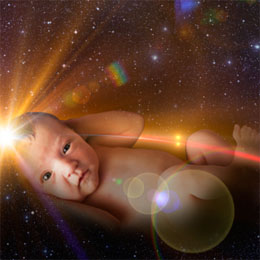
The model of the psyche used by academic psychiatry and psychology is painfully superficial and inadequate; it is limited to postnatal biography and to the Freudian individual unconscious. It reflects Freud’s opinion that “the newborn is a tabula rasa.” Mainstream academicians and clinicians have been unable to recognize the existence and psychological significance of the trauma of birth. The reason that is usually given for the inability of the fetus to remember birth is that its cortex is not fully myelinized.
This conclusion is absurd and represents a major logical error of such proportions that it is surprising to find it in a group of individuals who underwent rigorous scientific training. The myelinization argument is not used against the generally accepted importance of nursing and even “bonding” — exchange of looks between the mother and child immediately following birth. In addition, Eric Kandel was awarded the Nobel Prize for his research into the memory mechanisms in the sea slug Aplysia, referred to as the “simplest organism capable of forming memories.”
The work with holotropic states demonstrated the existence and paramount significance of the memory of birth. It showed that reliving of birth occurs in four specific constellations of emotions and physical sensations related to the four consecutive stages of birth — Basic Perinatal Matrices (BPMs). It was possible to describe distinct phenomenology of the individual BPMs and demonstrate their importance as sources of emotional and psychosomatic disorders, their therapeutic potential, their key role in the process of psychospiritual death and rebirth, and in the ritual and spiritual life of humanity. The birth trauma has also been proven to be an important source of human “malignant aggression” — violence in wars, revolutions and genocide.
In this module, you’ll:
- Explore the revolutionary discovery of the existence and dynamics of the memory of birth and Basic Perinatal Matrices (BPMs)
- Hear about the failure of mainstream academicians and clinicians to accept the existence of the memory of birth, and how the “myelinization fallacy” makes psychiatry unable to understand and treat effectively emotional and psychosomatic disorders
- Discover the critical role that BPMs play in the “malignant aggression” of the human species and in the ritual and spiritual history of humanity
Module 5: Visionary Journey Into the Deep Recesses of the Human Psyche

In this module, based on a rich collection of paintings from psychedelic and Holotropic Breathwork sessions, we will explore the perinatal and transpersonal realms of the psyche — domains as yet unrecognized by mainstream psychiatry and psychology.
We will demonstrate the critical role that these domains play in psychospiritual death and rebirth, a process that is essential for any serious approach to the ritual and spiritual history of humanity, such as shamanism, rites of passage, healing ceremonies of native cultures, ancient mysteries of death and rebirth, the great religions of the world, and the mystical traditions of all times and countries.
The knowledge of this experiential territory also provides revolutionary new insights into emotional and psychosomatic disorders and important guidelines for people involved in systematic self-exploration and spiritual quest. The dynamics of BPMs also throws new light on artistic creations from ancient times to the modern era and on sociopolitical events, such as wars, revolutions and genocide.
In this module, you’ll:
- Explore the phenomenology and symbolic language of the BPMs and the transpersonal realm through the art of people who experienced them; art being a medium more conducive to deep understanding than verbal description
- See the importance of these realms for art, ritual and spiritual history of humanity, and emotional and psychosomatic disorders
- Recognize the role that the trauma of birth and the archetypal realm have as sources of human violence
Module 6: Transpersonal Experiences & Their Importance for Self-Discovery, Spiritual Opening & Healing
Revealing Your Magnificence
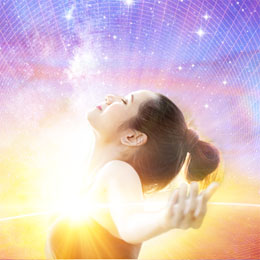
The second transbiographical domain that has to be added to the mainstream cartography of the psyche can be referred to as transpersonal; it contains experiences that involve transcendence of the boundaries of the body/ego and the limitations of three-dimensional space, linear time, and consensual reality. They fall into four categories:
- Transcendence of three-dimensional space (dual unity, experiential identification with other people and groups of people, animals, plants and inanimate objects);
- Transcendence of linear time (ancestral, racial, collective, karmic and phylogenetic memories, and historical collective unconscious};
- Transcendence of the boundaries of space-time (visits to archetypal domains of the collective unconscious and meeting with deities, demonic presences and discarnated beings),
- Psychoid experiences (siddhis, encounters with UFOs, hexing, psychokinesis and ceremonial magic).
Transpersonal experiences are important landmarks on the spiritual journey. Failure to recognize that they are normal and germane constituents of the psyche leads to misdiagnosing them as manifestation of serious mental disease (psychosis) and damaging administration of suppressive medication. Intense and challenging transpersonal experiences can best be seen as “spiritual emergencies.” When they are correctly understood and supported, they have great healing, transformative and healing potential.
In this module, you’ll:
- Hear about an important transbiographical domain that has to be added to the mainstream model of the psyche. The experiences belonging here involve transcendence of the boundaries of the body/ego and of the limitations of three-dimensional space, linear time and spacetime. For these properties, they can be referred to as transpersonal.
- Realize that transpersonal experiences are normal constituents of the psyche and should not be seen as manifestations of a serious mental disease (psychoses)
- Understand that even if episodes of transpersonal experiences disturb functioning in everyday life, they should not be seen as pathology but “spiritual emergencies.” Correctly understood and supported, they have great healing and transformative potential
Module 7: The Importance of Set & Setting for Navigating Non-ordinary Realities
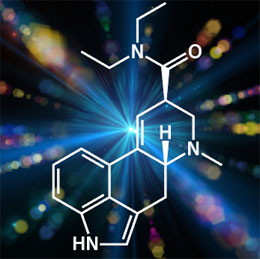
LSD-25, Albert Hofmann’s “wonder child,” engendered an unprecedented wave of enthusiasm and optimism among representatives of many disciplines and was administered in a broad range of sets and settings. Brain researchers saw the discovery of LSD-25 as the beginning of a new discipline — the science of consciousness.
Neuropharmacologists and neurophysiologists experienced working with it as a golden era of research; it led to major advances in the understanding of neuroreceptors, synaptic transmitters, chemical antagonisms, and of the role of serotonin in the brain.
Experimental psychiatrists saw LSD as a unique means for creating a laboratory model for naturally occurring functional or endogenous psychoses. They hoped that the “experimental psychosis,” induced by miniscule dosages of LSD, could provide unparalleled insights into the nature of schizophrenia and open up new avenues for its treatment. This would be the fulfillment of the Holy Grail of psychiatry — a test-tube cure for schizophrenia.
LSD was also highly recommended as an extraordinary unconventional teaching device that would make it possible for clinical psychiatrists, psychologists, medical students, and nurses to spend a few hours in a world resembling that of their patients and as a result be able to understand them better, communicate with them more effectively, and be more successful in their treatment.
These experiments not only provided deep insights into the inner world of psychiatric patients, but also revolutionized the understanding of the nature of consciousness and the dimensions of the human psyche.
Reports from psychedelic psychotherapists revealed LSD’s unique potential as a powerful tool that could deepen and accelerate the psychotherapeutic process. With LSD as a catalyst, psychotherapy could now be useful with categories of patients that previously had been difficult to reach — sexual deviants, alcoholics, narcotic drug addicts and criminal recidivists. Particularly valuable and promising were the early efforts to use LSD psychotherapy in work with terminal cancer patients.
However, even the therapeutic experiments with LSD were conducted with various sets and settings — in combination with tranquilizers, electroshocks and hypnosis and with the intention to mimic delirium tremens, facilitate psychotherapy and induce mystical experience. The discussion of the importance of set and setting on psychedelic sessions would not be complete without mentioning the criminal experiments of the military testing LSD as a potential chemical weapon and of the secret services exploring the potential of this substance to compromise or exploit foreign politicians and conduct brainwashing.
Psychedelics have no fixed predictable results; they are tools catalyzing the unconscious processes and the results of the experiments with them depend critically on their human use, and on the set and setting. The same is true for experiments with other forms of holotropic experiences.
In this module, you’ll:
- Explore the history of LSD experimentation in different disciplines and the recognition of the importance of set and setting for any form of holotropic experiences
- Find out how the set and setting influences the ratio of benefit and risk in experiments with holotropic states
- Discover how to create optimal conditions for navigating non-ordinary realities
Module 8: Self-healing Intelligence & Bodywork in Self-exploration & Psychotherapy

We discussed in an earlier module the lack of agreement in the confounding plethora of psychotherapeutic schools. The general strategy that therapists of all of these schools share is to understand how the psyche works, in general, and the psyche of their specific clients, in particular, and derive from this intellectual understanding the appropriate therapeutic interventions.
The radical alternative that becomes available in work with holotropic states is the shift from the therapist to the self-healing intelligence of the psyche and the body of the client.
The holotropic state of consciousness activates an “inner radar” which detects the unconscious material that has strong emotional charge and at the same time is close to the threshold of consciousness. It then brings this material to the surface and makes it available for processing. In the course of therapy the inner healing intelligence governs the order in which unconscious content emerges. This is similar to the principles that CG Jung described when he discussed his method of “active imagination” and the “individuation process.” It was also the inner radar that led the healing process in the early clinical research beyond postnatal biography to the discovery of the perinatal and transpersonal domains.
The work with holotropic states has a unique characteristic: it engages the emotional, somatic and spiritual aspects of the personality. It provides clear evidence for the mutual interconnectedness of the psyche and the body and their role in the dynamics of psychosomatic disorders. Bodywork is an important tool for psychonauts because it helps enormously in the process of clean completion and integration of induced as well as spontaneous episodes of holotropic states.
In this module, you’ll:
- Find out how holotropic states engage the emotional, somatic and spiritual aspects of the personality
- Examine the new revolutionary strategy of psychotherapy — using the self-healing potential of the psyche and body
- Discover how bodywork guided by inner healing intelligence can help to achieve closure and good integration of induced and spontaneous episodes of holotropic states
Module 9: Holotropic Breathwork
The Healing Power of Breath, Music & Bodywork
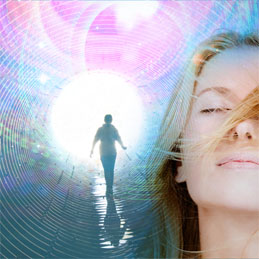
When it became increasingly difficult to conduct psychedelic research, Stan and his late wife, Christina, developed Holotropic Breathwork, a new approach to self-exploration and therapy that uses very simple means to induce powerful holotropic states similar to those evoked by psychedelics. It combines accelerated breathing, evocative music, a special form of releasing bodywork, mandala drawing, and group sharing of the experience.
Holotropic Breathwork utilizes the revolutionary findings from the research of psychedelic experiences and other forms of holotropic states, especially the vastly expanded cartography of the psyche and the concept of the inner self-healing intelligence. It also integrates the observations and ideas from various depth psychologies, transpersonal psychology, field anthropology, Eastern spiritual practices, and mystical traditions of the world.
It is usually done in groups, although individual sessions are also possible. Within the groups, people work in pairs and alternate in the roles of experiencer and “sitter.” The sitter’s role is simply to be available to assist the breather, not to interfere or interrupt the process. The same is true for trained facilitators, who are available as helpers if necessary.
In this module, you’ll:
- Explore Holotropic Breathwork, a revolutionary approach to self-exploration and therapy using the healing power of breath, music, bodywork, artwork and group dynamics
- Find out about the role of breathers, “sitters” and facilitators in the Holotropic Breathwork workshops
- Get information about where you can personally experience Holotropic Breathwork and how you can become a trained facilitator
Module 10: Spiritual Experiences in Holotropic States of Consciousness & Their Relation to Organized Religions
Revealing Your Magnificence

All religions were inspired by transpersonal experiences in holotropic states of their founders, prophets, saints and early disciples. Examples are Buddha’s experiences under the Bodhi tree, in which he experienced an encounter with Kama Mara, his seductive daughters, and his powerful army; Mohammed’s “Miraculous Journey,” through the paradise, seven heavens, and Gehenna and his audience with Allah; Jesus’ experience of temptation by the devil in the desert; Saul’s blinding vision of Jesus on the way to Damascus; Saint John of Patmos’ vision of the Apocalypse; Saint John of the Cross’ Dark Night of the Soul; hellish and angelic visions of Saint Teresa of Avila; Padmasambhava’s visionary battles with the deities of the Tibetan Bon religion, and others.
When religions become organized, they tend to lose connection with their spiritual source and discourage mystical experiences. Mystics have had a problematic place in organized religions, as exemplified by the story of Saint Joan of Arc and the Persian mystic Mansur Al-Hallaj. It is important to make a clear distinction between spirituality and religion. Spirituality is based on direct experiences of non-ordinary aspects and dimensions of reality.
It does not require a special place or an officially appointed person mediating contact with the Divine. The mystics do not need churches or temples. The context in which they experience the sacred dimensions of reality, including their own divinity, are their bodies and nature. And instead of officiating priests, they need a supportive group of fellow seekers or the guidance of a teacher who is more advanced on the inner journey than they are themselves.
According to Joseph Campbell, a useful deity has to be “transparent for the transcendent”; if it is made opaque and is worshipped for itself, it leads to idolatry and divisions. Experiences in holotropic states tend to be universal, nonsectarian and all-inclusive. Very interesting is the problem of “chemical” or “instant mysticism in self-exploration with psychedelics.
In this module, you’ll:
- Hear about spiritual experiences of the founders of religions — the prophets and saints who inspired and nourished them
- Explore the differences between spirituality and religion
- Find out about the controversy concerning mystical experiences in psychedelic sessions (“chemical” or “instant mysticism”)
Module 11: Mystical Experiences
Psychosis or Transcendence?

Western science is dominated by monistic materialism that has no place for spirituality of any kind. Modern psychiatry does not have a category resembling “spiritual experience” or “mystical experience;” all such experiences are seen as manifestation of serious mental diseases, or “psychoses.” This is an unfortunate error caused by an inadequate and superficial model of the psyche used by mainstream psychiatry.
This model does not recognize perinatal and transpersonal domains as germane dimensions of the human psyche and sees experiences originating there as products of an unknown pathological process. Modern consciousness research has shown that, correctly understood and supported, spontaneous episodes of holotropic states can be healing, transformative, evolutionary and serve as invaluable sources of paradigm-breaking information about consciousness, the human psyche, and even the nature of reality.
Stan and his late wife Christina Grof coined the term “spiritual emergencies” that refers to episodes of holotropic states of consciousness that are so intense that they interfere with the ability to function adequately in everyday life. They described the triggers of these episodes; features which differentiate them from psychotic episodes; their most important forms; and ways to support them in a way that enhances their therapeutic and transformative potential.
Proper handling of these episodes brings benefit not only to the individuals involved, but also to society at large, because successful completion and integration of spiritual emergencies typically leads to a worldview, hierarchy of values and strategy of life that would increase the chances of humanity for survival.
In this module, you’ll:
- Discover that an important subcategory of non-ordinary states currently misdiagnosed as psychoses are actually crises of spiritual opening that have great healing and transformative potential
- Investigate the most important types and phenomenology of these states, their triggers, and the features differentiating them from psychoses
- Find out how people experiencing spiritual crises can be supported
- Realize that proper treatment of these crises might have implications for the future of humanity
Module 12: Holotropic States, Transpersonal Psychology & Hard Sciences
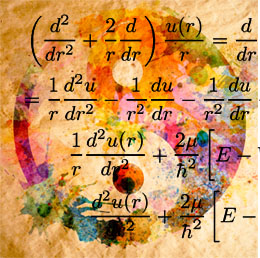
The members of the small group in Palo Alto who were formulating the early form of transpersonal psychology encountered a serious problem. Although transpersonal psychology made sense in and of itself, it seemed impossible to reconcile it with the existing scientific paradigm. The turning point in this situation was the publication of Fritjof Capra’s book, The Tao of Physics, showing the increasing convergence between modern physics and the mystical worldview.
The gap between transpersonal psychology and science continued to close with revolutionary advances in a variety of disciplines — invention of optical holography; Karl Pribram’s holographic model of the brain; David Bohm’s theory of holomovement; Rupert Sheldrake’s concept of morphogenetic fields; Erich Jantsch’s system theory; Barrow and Tipler’s anthropic principle and others.
Recent culmination of this trend is Ervin Laszlo’s concept of the Akashic field and his connectivity hypothesis. It is increasingly likely that transpersonal psychology will become an integral part of a new paradigm integrating the best of science and the best of the spiritual tradition.
In this module, you’ll:
- Hear a personal history of the beginnings of transpersonal psychology
- Delve into the struggle to integrate transpersonal thinking with the scientific worldview
- Find out which advances of new paradigm science are supporting transpersonal psychology and legitimizing psychonautics
Module 13: Synchronicity
CG Jung’s “Acausal Connecting Principle”

Synchronicity is a phenomenon of great importance for anybody experimenting with holotropic states of consciousness (psychedelic sessions, shamanic rituals, Holotropic Breathwork, or some other powerful experiential psychotherapy, and spiritual emergencies).
Synchronicity was first observed by CG Jung and described as “a simultaneous occurrence of a psychological state with one or more external events which appear as meaningful parallels to the momentary subjective state.” Being aware that the concept of synchronicity violates the principle of linear causality, the cornerstone of materialistic science, Jung hesitated 20 years before publishing his groundbreaking essay on the subject: “Synchronicity: An Acausal Connecting Principle.”
Psychiatrists hear often from their patients about “fantastic coincidences,” but are not familiar with this phenomenon and dismiss them as “delusions of reference.” However, anybody who takes the pain to check the facts has to admit that the probability that the connections are accidental is astronomically low. Holotropic experiences tend to vastly increase the incidence of synchronicities.
Jung shared his observations on synchronicity with Albert Einstein and Wolfgang Pauli, who encouraged him to continue his research, since this phenomenon was occurring also in quantum relativistic physics. Synchronicity is of great theoretical significance in new paradigm science since it indicates that the universe is “radically nonlocal” (Bell’s theorem). The existence of synchronicity is essential for the correct understanding of archetypal astrology.
In this module, you’ll:
- Hear about the existence of synchronicity, an acausal meaningful connection between intrapsychic processes and events in the material world
- Be shown the importance of synchronicity as a potential pitfall for psychonauts
- Find out about the validation of the phenomenon of synchronicity by quantum-relativistic science
Module 14: Higher Creativity
Holotropic States as Source of Scientific & Artistic Inspiration
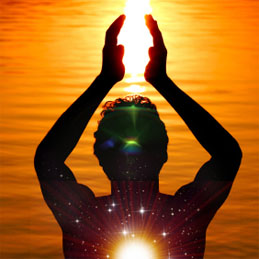
One of the most fascinating aspects of the work with holotropic states is their effect on creativity. In his book, Higher Creativity, Willis Harman described numerous situations in which musicians became channels for creative energy and scientists found solutions for challenging intellectual problems, including those that they could not solve in the everyday state of consciousness.
Mozart described that entire symphonies appeared in his head in a final form; Puccini attributed Madam Butterfly to God while he only held the pen; Wagner hallucinated music that he was writing; Nietzsche described his creative process as being taken over by enormous external force; Friedrich Kekule solved the problem of the structure of benzene after he had a vision of Uroboros biting his tail;
Nikola Tesla envisioned the fully functioning electric generator in a finished form; Einstein received important insights when he envisioned himself as riding a ray of light; Francis Crick admitted that taking LSD helped him solve the problem of the helical structure of the DNA molecule; Kari Mullis ascribed his discovery of the polymerase chain reaction (PCR) to his use of LSD; and the role of psychedelics in the development of computers is well known (Steve Jobs, Douglas Engelbart, Kevin Herbert).
In this module, you’ll:
- Examine the enhancing effect of holotropic states on artistic and scientific creativity
- Explore Willis Harman’s concept of “higher creativity,” a situation in which the individual in a holotropic state becomes the channel for cosmic creative energy
- Hear about the important role that experimentation with psychedelics played in the development of computers
Module 15: When the Impossible Happens
Adventures in Non-ordinary Realities

When we get involved in self-exploration or therapeutic work which involves holotropic states of consciousness, we experience and observe many events in the inner and outer world that should not be possible if the current materialistic worldview were correct.
And yet, they are happening with increasing frequency as we continue our spiritual journey: synchronicities that are far beyond reasonable statistical probability; accurate new information drawn from experiential identification with animals and visits to mythological realms of previously unknown cultures; veridical out-of-body experiences (OBEs); astral projection; mind-over-matter phenomena (siddhis); healing achieved by unorthodox and rationally incomprehensible means; precognitive experiences; and others.
In this module, you’ll:
- Find out how the work with holotropic states leads to many experiences and observations that undermine the basic metaphysical assumptions of the materialistic worldview
- Explore how this work is the source of a wild array of “anomalous phenomena” which show an urgent need for a radical overhaul of the current scientific paradigm
- Discover the recent proposal for the “new scientific worldview for the 21st century” that the world’s foremost system theorist, Ervin Laszlo, presents in his forthcoming book, What is Reality?: The New Map of Cosmos, Consciousness, and Existence.
Module 16: Healing & Transformative Potential of Holotropic States of Consciousness
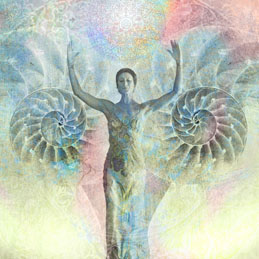
The value of the work with holotropic states and their potential to improve the quality of our life can best be illustrated by using the famous Tibetan thangka depicting the Wheel of Life held in the grip of the horrifying Lord of Death.
The wheel is divided into six segments representing the different lokas, or realms into which we can be reborn: the celestial domain of gods (devaloka), the realm of the jealous warrior gods (asuraloka), the region of the hungry ghosts (pretaloka), the world of human beings (manakaloka), the domain of the wild beasts (tiryakaloka), and hell (narakaloka).
Inside the wheel are two concentric circles. The outer one shows the ascending and descending paths along which souls travel. The innermost circle contains three animals — a pig, a snake and a rooster.
The animals in the center of the wheel represent the “three poisons” or forces that, according to the Buddhist teachings, perpetuate the cycles of birth and death and are responsible for all the suffering in our life. The pig symbolizes ignorance concerning the nature of reality and our own nature (avidya); the snake stands for anger and aggression; and the rooster depicts desire and lust leading to attachment.
The quality of our life and our ability to cope with the challenges of existence depend critically on the degree to which we are able to reduce the effect of these forces in our life. In the original Buddhism (Hinayana), the solution was to escape from the samsaric world into nirvana; in later Buddhism (Mahayana), the quality of our life increases and we move in the direction of nirvana to the extent to which we can reduce the degree to which these three poisons have an influence on us. This can be achieved by responsible systematic work with holotropic states.
In this module, you’ll:
- See and hear about a famous Tibetan thangka presenting in a synoptic way the ideas in Vajrayana teachings concerning human existence and the cycle of reincarnation
- Explore how you can improve the quality of life according to Mahayana Tibetan Buddhism by reducing in your life the effect of three “poisons” — forces that are the source of all suffering: ignorance, aggression and desire
- Find out how systematic work with holotropic states can help you to achieve this goal
About Stanislav Grof, MD
 Stanislav Grof, MD is a clinical psychiatrist with over 50 years of experience in researching non-ordinary states of consciousness induced by psychedelic substances and by experiential psychotherapy. He’s one of the founders and chief theoreticians of transpersonal psychology, and the founding president of the International Transpersonal Association (ITA).
Stanislav Grof, MD is a clinical psychiatrist with over 50 years of experience in researching non-ordinary states of consciousness induced by psychedelic substances and by experiential psychotherapy. He’s one of the founders and chief theoreticians of transpersonal psychology, and the founding president of the International Transpersonal Association (ITA).
He was formerly Principal Investigator in a psychedelic research program at the Psychiatric Research Institute in Prague, Chief of Psychiatric Research at the Maryland Psychiatric Research Center, Assistant Professor of Psychiatry at Johns Hopkins University School of Medicine, and Scholar-In-Residence at the Esalen Institute.
Stan currently teaches at the Department of Philosophy, Cosmology and Consciousness at the California Institute of Integral Studies (CIIS), and through Grof Transpersonal Training (GTT). He writes and gives lectures, seminars and workshops worldwide.
He is the author of the books, Psychology of the Future, LSD Psychotherapy, Beyond the Brain, The Cosmic Game, When the Impossible Happens, The Ultimate Journey, Modern Consciousness Research and the Understanding of Art, and co-author with Christina Grof of Holotropic Breathwork, Stormy Search for the Self, Spiritual Emergency, Beyond Death and over 150 scholarly articles.
Readmore about: Stanislav Grof
Delivery Policy
When will I receive my course?
You will receive a link to download your course immediately or within 1 to 21 days. It depends on the product you buy, so please read the short description of the product carefully before making a purchase.
How is my course delivered?
We share courses through Google Drive, so once your order is complete, you'll receive an invitation to view the course in your email.
To avoid any delay in delivery, please provide a Google mail and enter your email address correctly in the Checkout Page.
In case you submit a wrong email address, please contact us to resend the course to the correct email.
How do I check status of my order?
Please log in to TheDLCourse account then go to Order Page. You will find all your orders includes number, date, status and total price.
If the status is Processing: Your course is being uploaded. Please be patient and wait for us to complete your order. If your order has multiple courses and one of them has not been updated with the download link, the status of the order is also Processing.
If the status is Completed: Your course is ready for immediate download. Click "VIEW" to view details and download the course.
Where can I find my course?
Once your order is complete, a link to download the course will automatically be sent to your email.
You can also get the download link by logging into your TheDLCourse account then going to Downloads Page.
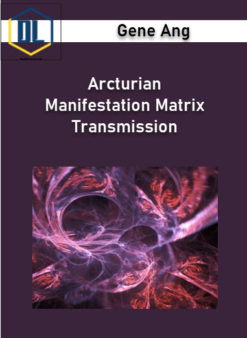 Gene Ang – Arcturian Manifestation Matrix Transmission
Gene Ang – Arcturian Manifestation Matrix Transmission 
